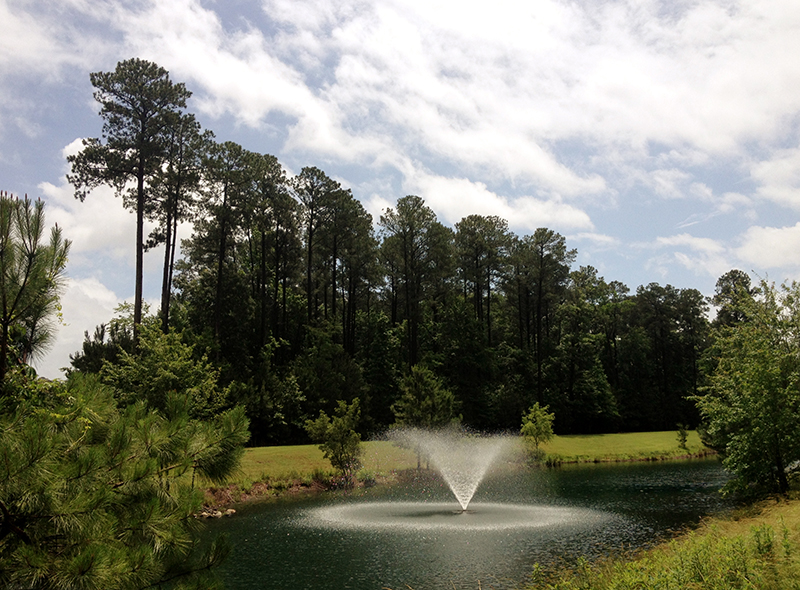Water World: Managing the Depths
June 18th, 2012
AS SEEN IN Minutes, Community Associations Institute, May/June 2012: Written by Julie Warren, Minutes Editor
 While most residents may be mainly interested in the appearance of their community’s lake or pond, water features are more than just a charming view.
While most residents may be mainly interested in the appearance of their community’s lake or pond, water features are more than just a charming view.
According to Kevin Tucker, president of Solitude Lake Management, “Lakes and ponds are usually designed to collect and filter stormwater before that water flows into streams, rivers and bays.”
And depending on a community’s original site plan and the codes of its city, county or other municipality, periodic inspections may be required by law. “Typically, if (a pond) was built to be part of a stormwater management system, then there will be a requirement to inspect and maintain it,” says Tucker, whose company has offices in several Mid-Atlantic states. “A lot of homeowners associations don’t realize they’re not doing something they should be doing.”
Down BelowEven if a water feature isn’t specifically designed for stormwater management and inspections aren’t required, Tucker still encourages associations to schedule regular inspections—annually or at least every couple of years—that can reveal hidden problems. Erosion, leaks in dams, broken pipes or malfunctioning outflow structures could cause water levels to rise and become bigger issues later.Excavation, development or heavy construction can contribute extreme amounts of sediment in ponds and lakes, warns Johnny Foster, president and owner of Foster Lake and Pond Management in Garner, N.C. Even when there’s no such activity, Tucker says that water bodies need to be monitored for sediment and other debris that, over time, collect in most ponds and lakes naturally. Sediment buildup and silt, even if they aren’t toxic, can block sunlight and air that is essential for aquatic habitats. All water bodies need to be dredged at some point to remove sediment so they can continue working properly, Tucker says. “Most people have no idea about that.”Tucker and Foster recommend that communities with ponds or lakes invest in a baseline bathymetric study, which maps the pond or lake bed using GPS and depth sounders, to create a three-dimensional model. The model can then be compared to the original design to determine areas where sediment has collected and how much dredging may be needed. “It’s not that expensive, relatively speaking,” Tucker says. “And it’s probably one of the few things that (communities with ponds) should do.”Everywhere ElseTucker also recommends that communities invest in annual maintenance contracts for their water features. And any community with a lake or pond should insist that a reserve study includes—at the very least—a note to “explore further” inspection and maintenance costs for its water features. While Tucker admits that many good reserve studies will recommend periodic dredging, he points out that not all reserve specialists are equipped to provide more than estimates based on averages. “If you don’t do the (bathymetric study), you can’t know what your pond needs,” he says.
Contact the experts at 888-480-5253 for all of your lake, pond and fisheries management needs.
Since 1998, SOLitude Lake Management has been committed to providing full service lake and pond management services that improve water quality, preserve natural resources, and reduce our environmental footprint. Services are available throughout the Eastern United States. Fisheries management consulting and aquatic products are available nationwide. Learn more about SOLitude Lake Management and purchase products at www.solitudelakemanagement.com.










